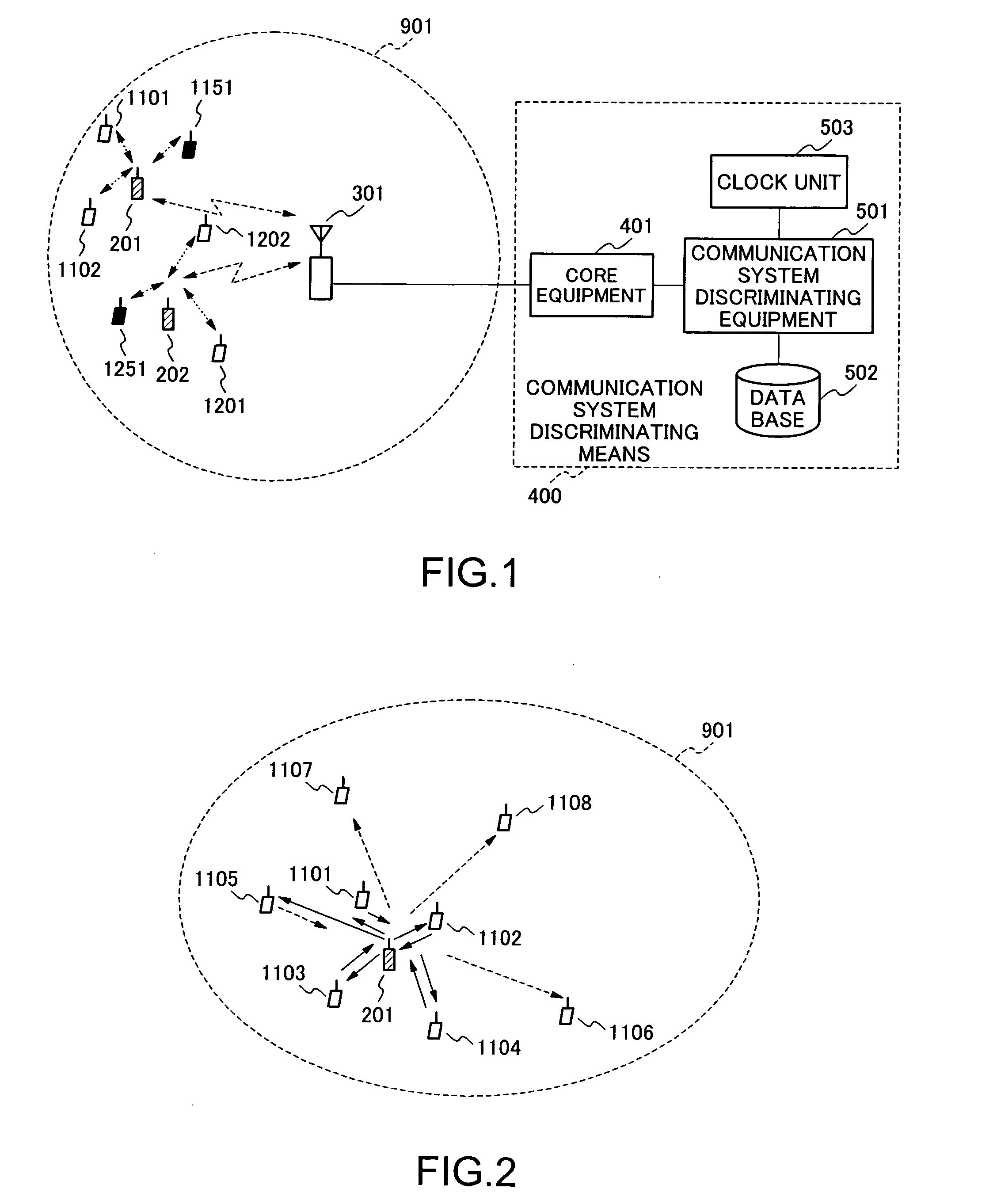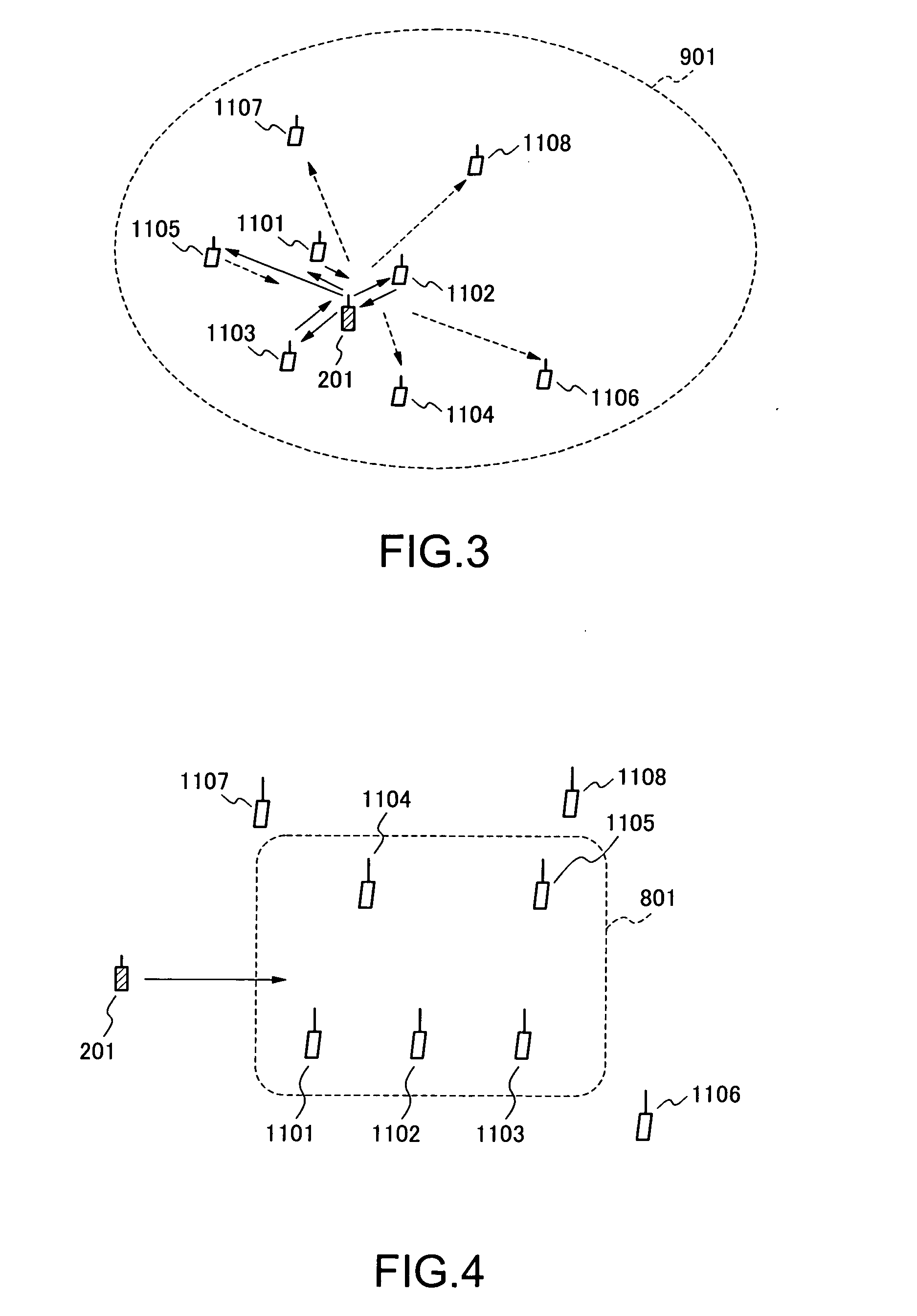As a result, the communication traffic increased, and the insufficient communication capacity has become the problem to be solved.
However, contrary to the technical tendency to require high communication capability, there is a request to suppress the communication capability.
There is the possibility that the communication using a mobile telephone, etc. can be nuisance to people around, and the related trouble has increased these days.
In addition, since a piece of advice by a person nearby to such a mobile terminal user to stop using the mobile terminal could cause trouble, the use of the mobile terminal is normally overlooked as is.
It is also pointed out that there may be the possibility of undesired influence of an electromagnetic wave emitted from a mobile terminal on an
electronic equipment device, for example, a heart pacemaker, a
hearing aid, a
medical equipment, etc.
Thus, the heart pacemaker, etc. can cause a serious crisis to a life.
Thus, in a place where there is a person having a heart pacemaker implanted or having a
hearing aid applied, or in a hospital wing or an
operation room where
medical equipment is installed, it is requested that the use of a mobile terminal is strictly restricted.
Aside from this, under the conditions of places and timing, services for users can be selectively restricted.
Therefore, it is difficult to apply this method to the place such as a concert hall, etc. where communication restriction is released after an event is over.
It is also difficult to apply this method to a
train, etc.
Applying a
radio wave cutoff material or a
radio wave absorber to a
train causes passengers to feel confined visually and in ventilation.
As described above, the place where the first method is applied is limited to a place where communications are constantly prohibited, a place where the presence of the
radio wave cutoff material is not annoying, a place where the radio wave cutoff material setting cost is acceptable, etc.
However, since it is difficult to design the range reached by the
noise radio signal radiated from the
noise radio signal source in a geographically precise shape, it is difficult to strictly provide the area for restricting the communication of a mobile terminal.
Since the former uses plural
noise radio signal sources, the cost increases.
Since the latter also requires a high-performance and costly equipment using the
antenna radiation technology (for example, adaptive array antenna) of varying the
antenna radiation pattern, it is not practical and lacks the flexibility in changing an arrangement.
However, in this case, there is the problem similar to the problem explained in the second method.
Therefore, the mobile terminal becomes large and costly.
In addition, there occurs the problem that the method cannot be used in the place (in a building, an
underground space, etc,) where radio signals from the communication
satellite cannot be received.
However, when the entry or the exit of the mobile terminal is detected, and then a sensor does not correctly work for any reason (for example, the difference in sensitivity of a sensor depending on the location of the sensor, the entry and the exit through a gate other than the gate where the sensor is placed, the action of
cutting off a radio signal from the sensor incidentally or intentionally), the system cannot correctly recognize the entry or the exit of the mobile terminal.
However, the restriction by this method largely depends on the personal manner of a user of mobile terminal, and services cannot be restricted on persons of poor manners.
In the above-mentioned cases, when the first method is applied, not only the
voice communication but also all other communications of mobile terminals in a
train are disabled, and the selective service restriction cannot be performed.
Similarly, when the second method is applied, not only the
voice communication but also all other communications of mobile terminals are disabled, and the selective service restriction cannot be performed.
However, when a restricted area is provided, the geographical precision cannot be satisfied.
However, there is a place where a positioning process cannot be performed, and the current location of mobile terminal cannot be recognized in such a case.
For example, when music data accumulated in the memory of a mobile terminal is replayed, the reproduced sound can be noisy to the people around.
Furthermore, there can be nuisance that a person carrying a mobile terminal having the voice recording mechanism and
image recording mechanism (not limited to static images or moving pictures) takes a picture of other persons without permission.
These problems are also left to the personal manners of users, and there are no effective countermeasures against the users of poor manners.
The main cause of the problems is that the operations of a mobile terminal such as replaying and recording sound and images, etc. are so-called offline operations in which a mobile terminal is operated as disconnected from a communication system, and it is considered that it is not necessary for the communication system to suppress or
restrict the operations.
However, the nuisance by these functions to the people around has recently been recognized as a serious problem, and there is a request to
restrict or suppress the nuisance use in any method.
Therefore, it is difficult to perform flexible communication and service restriction depending on the place and circumstances.
Practically, the influence of electromagnetic wave energy on
biomedical equipment can be a damage of equipment itself by the electromagnetic wave energy radiated from a mobile terminal, a malfunction of
biomedical equipment for which no sufficient
countermeasure is taken against an electromagnetic wave by
noise power in a pulse form generated by the intermittent
radiation of electromagnetic wave energy.
However, when the communication speed with reference to the transfer rate of the transfer information is low, the required amount of transmission power decreases, and it has a small influence.
 Login to View More
Login to View More  Login to View More
Login to View More 


